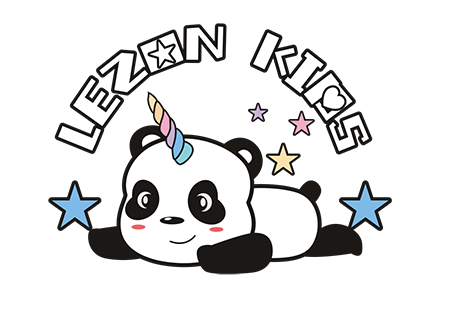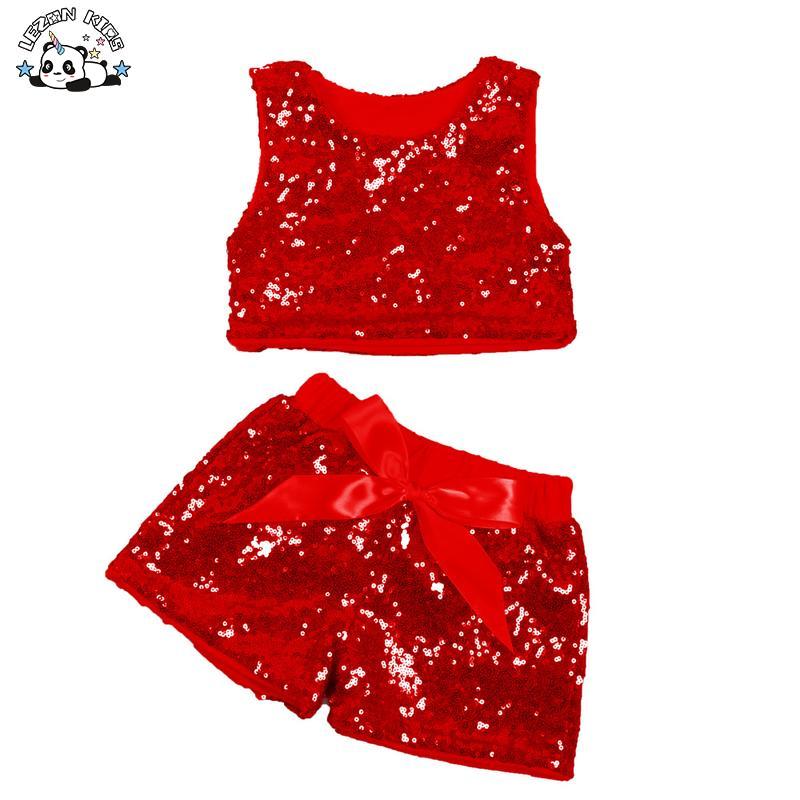2025-07-25
Lightning Delivery in 30 Days! How Does LEZONKIDS Children Clothing OEM Build a “Fast and Excellent” Production Closed Loop?
1. Traditional Children Clothing OEM Factories: Stuck in the Quagmire of “Slowness”
The children’s clothing market is a race against time. Generation Z parents now dominate consumption. Social media accelerates trend changes. As a result, the life cycle of a hit product may be only 60 days. Miss the golden windows of Children’s Day, Christmas, or the school start. Then inventory piles up. Funds get frozen. The market slips into others’ hands. “Slowness” is no longer an efficiency issue. It has become a children clothing oem life-or-death strategic crisis.
Today, fast fashion giants like ZARA and H&M reshape industry perceptions. They launch new global products in just 14 days. Thus, the agility of the children clothing oem chain has become a brand’s core competitiveness. Delivering fast within 30 days is no longer a bonus. It is a critical speed that decides whether a brand can seize peak seasons and grab market share.
You hand over your design to a factory with high hopes. Yet you end up waiting for a long time. This often stems from the many constraints of traditional production models:
- Processes are fragmented and cumbersome. Communication costs are high. Decision-making chains are long.
- Traditional large factories rely on mass production to spread costs. Their production line adjustments are clumsy. Inflexible capacity allocation becomes a fatal flaw in market response.
- Quality control lags behind. Rework wastes time. Factories often place quality inspection at the end of production. Bulk goods are completed. Then problems emerge: misaligned printing, loose stitching, and more. Large-scale rework wastes materials. It also drags delivery time into the abyss. This post-error correction model makes “fast” a luxury.
Facing these industry pain points, LEZONKIDS did not simply chase “speed”. Instead, it achieved a dynamic balance between “speed” and “excellence” through systematic reconstruction. It forged the core capability of efficient 30-day delivery.
2. Hard Power Foundation: Dedicated Production for Efficiency Leap
- 6000㎡ lean layout: LEZONKIDS’ own factory is no messy workshop. Its 6,000-square-meter space has been scientifically planned. It has set up independent dedicated lines based on core children’s clothing crafts: cutting, printing/embroidery, sewing, ironing, quality inspection, and packaging.
- “Special person for special post” deep empowerment: Each dedicated line has skilled technicians. They have long been deeply engaged in their craft. Cutters master efficient material arrangement and precise cutting. The sewing group splits into different processes. For example, the top group focuses on collars and cuffs. The trouser group specializes in crotch stitching. Their movements are highly standardized and process-based. Specialization in the field brings exponential growth in proficiency. It also eliminates switching losses.
- Smart device support: The factory has introduced automatic cutting tables. These improve cutting accuracy and speed by 30%. It uses intelligent hanging systems. These reduce semi-finished product handling and shorten work-in-progress dwelling time. It also has efficient special machines, such as automatic placket machines and elastic band machines. All these ensure seamless coordination between hardware and dedicated line organizational models. They lay the foundation for efficient physical performance.
3. Process Optimization Revolution: Order Disassembly, Material Pre-positioning, Parallel Operations
LEZONKIDS’ core weapon is the “Order Agile Processing Model” (OAPM). It has accumulated this model over 15 years. It completely reconstructs the linear process:
3.1 Intelligent Order Decomposition
Once an order is confirmed, the system starts in-depth analysis:
- Process path mapping: It automatically identifies all process steps and standard working hours involved in the order.
- Material BOM deconstruction: It accurately breaks down the required list of main materials, auxiliary materials, and decorations.
- Critical Path Identification: It locks in the longest cycle link, such as custom embroidery or special printing and dyeing. This provides decision-making basis for subsequent scheduling.
3.2 Material Pre-positioning
- Dynamic Safety Stock: Based on historical data and trend forecasts, it implements dynamic safety inventory management. This covers high-frequency basic fabrics, like pure cotton jersey and hoodie fabrics. It also includes general auxiliary materials, such as regular buttons and sewing threads. Thus, over 70% of main materials for regular orders are “available immediately”.
- Supplier Collaboration Network: It has established deep VMI (vendor managed inventory) and JIT (just-in-time) response mechanisms with core fabric and auxiliary material suppliers. For long-cycle materials, such as customized pattern fabrics and special zippers, orders are placed within 24 hours after order confirmation or design draft locking. Other links advance in parallel during material preparation.
- Real-time dashboard of material status: All material procurement, warehousing, and inspection statuses can be viewed online. This warns of potential delays.
3.3 Parallel Production Flow
Based on disassembly and pre-production, multi-task parallelization is achieved:
- Main fabric procurement and customized embroidery production start at the same time.
- Basic cut piece production and decorative item processing, such as heat transfer and ribbons, are carried out simultaneously.
- Once all materials for sewing are ready, each dedicated line starts working according to instructions. They do not wait for each other.
4. Flexible Production Capacity Engine: Small Orders, Fast Response, No Fear of Fluctuations
LEZONKIDS deeply understands the pain points of emerging brands and e-commerce sellers: “small batches, fast trial and error, and chasing hot spots”. It creates extreme flexibility for this:
- Minimum order quantity: 100 pieces, truly inclusive: It breaks through the industry’s conventional minimum order quantity threshold. It sincerely embraces small order demands.
- Modular production line design: The sewing line uses modular units. For example, one unit focuses on T-shirts. Another focuses on trousers. These can be quickly switched according to order combinations. Switching time is controlled within 2 hours.
- Shared capacity pool: It has established a shared skilled worker pool across product lines. For instance, skilled seamstresses can be flexibly deployed between the T-shirt line and outerwear line based on demand. An intelligent production scheduling system optimizes work dispatch. This maximizes the use of fragmented production capacity to handle small orders.
- Quick Response Team: To handle urgent order additions or supplementary orders, it has set up a cross-functional rapid response team. This team enjoys priority in material allocation and production line order insertion. It ensures extremely fast delivery.
5. Transparent Delivery Guarantee: Visual Tracking, Risk Foreknowledge
Speed does not mean loss of control. LEZONKIDS has built a full-process digital monitoring system to reassure customers:
- Order life cycle dashboard: A customer-exclusive backend allows real-time viewing of order status. Examples include: design draft confirmed✅; main material procurement in progress (estimated within 3 days); cutting in progress (40% completed); embroidery completed and waiting for sewing. Key nodes are clearly visible.
- Intelligent early warning radar: The system automatically monitors each link’s progress. If a link is about to exceed the preset threshold, such as material warehousing delay of more than 1 day, it automatically triggers an early warning. It notifies customers and the internal management team. It reserves buffer time to start plans, such as using backup suppliers or adjusting production sequencing.
- Cloud quality inspection report: Quality inspection reports of key processes, including post-cutting, mid-sewing inspection, and final inspection, are uploaded in real time. So are pictures and texts of problem points. Quality is transparent and traceable.
Actual Combat Witnesses Speed: 15 Days to Rush for the Children’s Day Peak Season
On April 10, an emerging designer brand (pseudonym: SunnyKid) urgently contacted LEZONKIDS. It needed 200 customized children’s T-shirts. These T-shirts had complex animal theme digital printing and sequin embroidery. They had to be delivered before May 25 for the Children’s Day promotion. Traditional factories would take at least 35 days to respond.
LEZONKIDS’ problem-solving steps:
- Quick Start (April 10): Design draft confirmation and OAPM disassembly were completed on the same day. Core long-cycle materials were identified as customized digital printed fabrics and sequins.
- Material pre-production and parallelization (April 11): It immediately placed fabric orders with cooperative printing factories. Delivery time was 7 days. It also started purchasing sequins, with a 5-day delivery time. Meanwhile, conventional cotton materials and sewing threads were directly taken from the dynamic library.
- Flexible production scheduling (April 18): Sequins and fabrics all arrived. Modular sewing lines and printing lines were put into operation at the same time. A shared labor pool ensured sufficient manpower.
- Full visibility + strict quality control (April 18-24): SunnyKid monitored production progress in real time. Inspection found individual embroidery positioning deviations. The early warning system was triggered. The production line adjusted the template immediately. The loop was closed within 1 hour.
- On-time delivery (April 25): 200 high-quality customized T-shirts were produced, inspected, and packaged. They were delivered to the warehouse 30 days ahead of the customer’s final demand.
Result: With this batch of quick-response products, SunnyKid successfully seized online traffic during the Children’s Day golden period. The products sold out in the first week. They also drove a 120% growth in other brand products.
Peak Season Strategy: Accurate Planning to Win at the Starting Point
Speed comes from advance planning. Combining LEZONKIDS’ extreme speed capabilities with industry peak season rules, here are key node references:
| Target Peak Season | Core Sales Period | LEZONKIDS Latest New Model Order Deadline | Highly Recommended Start-up Period | Key Actions |
|---|---|---|---|---|
| Children’s Day | Mid-to-late May – June 1 | April 20 | March 15 – April 5 | Lock in designs; prepare long-cycle materials like special printing/embroidery; reserve sufficient production and logistics buffers. |
| Fall Semester | Late August – mid-September | July 15 | June 1 – June 30 | Finalize autumn collection designs; prepare main materials like fleece and polar fleece; start first order production. |
| Christmas/New Year’s Day | December | October 25 | September 15 – October 15 | Design winter themes, including thick coats and cotton clothes; prepare sufficient filling cotton and other materials; plan batch production and replenishment. |
| Spring Festival | Mid to late January of the following year | November 30 | October 15 – November 15 | Finalize Spring Festival theme designs with elements like red and buttons; ensure materials for special crafts like embroidery are in place. |
Key to Victory:
- Reserve design confirmation period: Complex designs and repeated revisions are invisible time killers. Reserve 1-2 weeks for design communication.
- Prioritize long-term materials: Customized fabrics, special accessories like environmentally friendly waterproof zippers, and complex decorations like hand-beaded items must be ordered first.
- Use “Small Order Quick Response” for testing: For new models with uncertain market responses, place a small order of 100-300 pieces first via LEZONKIDS. This allows quick market testing. If data feedback is good, immediately place a replenishment order. This minimizes inventory risk.
- Build long-term collaboration: Establish strategic cooperation with LEZONKIDS. Share sales forecasts. This helps factories plan production capacity and material reserves in advance. It further shortens delivery time.
Conclusion
In the ever-changing children’s clothing arena, 30-day delivery capability is no longer just about production efficiency. It has become the core competitiveness of a brand’s supply chain. With 15 years of rich experience in children clothing OEM/ODM, LEZONKIDS has successfully turned “fast and excellent” from a vision into a replicable closed-loop system. This is not just a victory of technology. It is also a profound insight into the nature of the children’s clothing industry. Whoever can respond agilely to market pulses can lock in growth amid changing trends. They can turn “time windows” into “wealth windows”.
Next time you worry about peak season stocking, review your supply chain. Does it have the explosive power to turn creativity into shelf goods at lightning speed? Choosing LEZONKIDS (children clothing oem) means injecting the “fast and excellent” gene into your brand’s lifeline. It lets you stay one step ahead and gain an edge in the children’s clothing market race.







